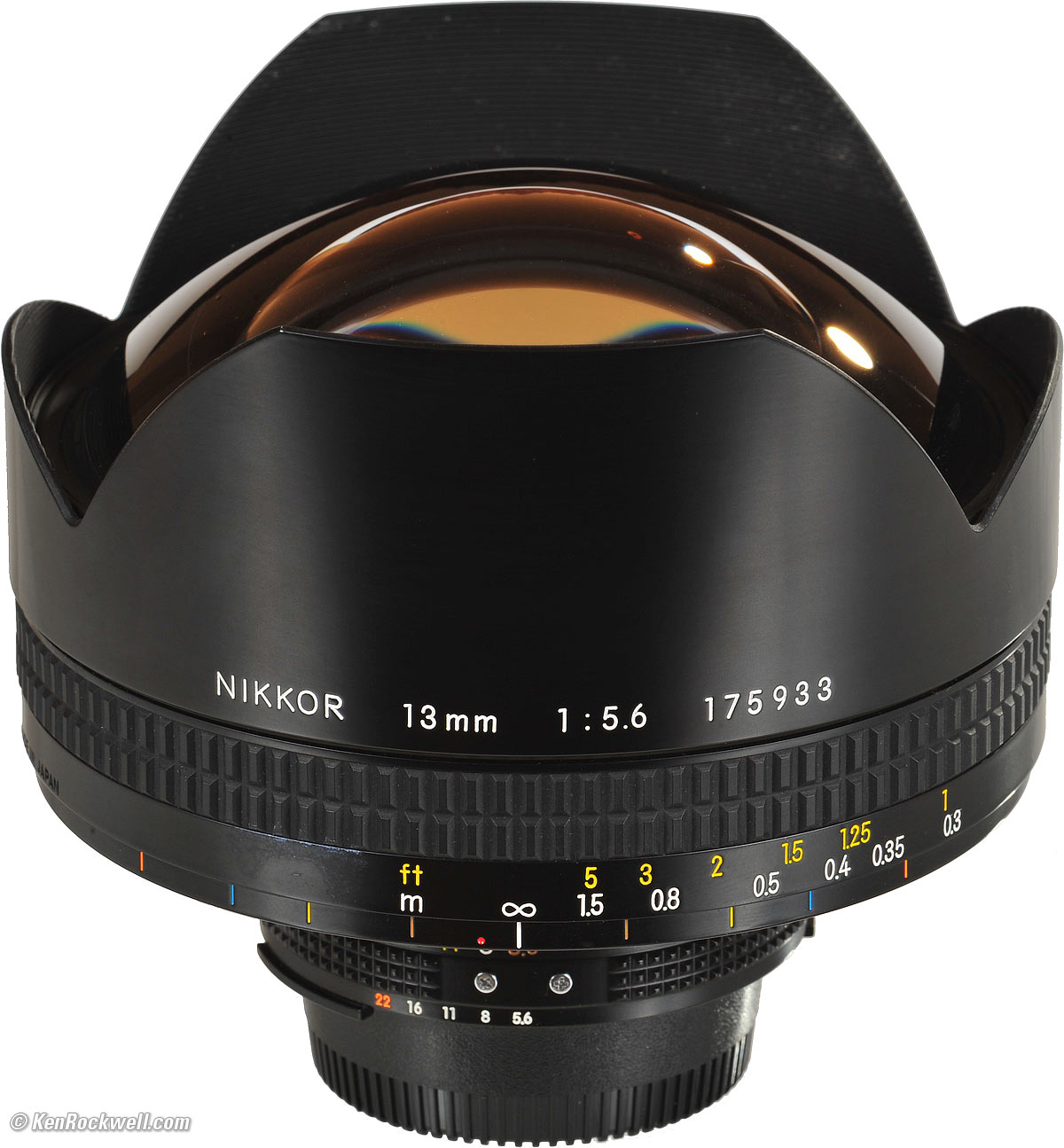
Nikon 13mm f/5.6
"The Holy Grail" (1976 -1998)
© 2008 KenRockwell.com
"The Holy Grail" (1976 -1998)
© 2008 KenRockwell.com
The Nikon 13mm is compatible with every decent Nikon SLR ever made, from the original Nikon F of 1959 through today's D3X, D3 , D700 and F6.
The newest upper-end digital Nikons are fully compatible, and even have this lens programmed into their firmware!
If you have one of the less than 40 non-AI 13mm lenses from 1976-1977, be sure to have it factory upgraded to AI.
On the D3X, D3, D700, D300, F6, D2 and D200, use the "Non-CPU Lens Data" menu option to input 13mm and f/5.6. This gives full matrix metering and EXIF data, and finder read-out of set aperture. It works great in aperture-preferred as well as manual modes on these cameras.
It works perfectly every professional film camera (F, F2, F3, F4, F5, F6), and adds Matrix metering on the FA, F4 and F6, although it won't couple well to the cheaper digital (D80 and below) and cheaper film cameras (N80 and below).
See Nikon Lens Compatibility for details with your camera. Read down the "AI, AI-s" column for this 13mm.
Rear, AI Nikon 13mm f/5.6s. enlarge.
Production History back to intro back to top
1971: Designed by Ikuo Mori, who applied for a U.S. Patent on 21 March 1972.
1973 April 17th: U.S. Patent 3,728,011 was granted, and the first prototype was made.
1976 March - 1977: The first version of this 13mm lens was released as a non-AI lens. Nikon made only about 40 of these non-AI versions.
1977 June - 1982 March: Updated to AI. Nikon made only about only ten of these AI versions. Of course anyone who owned the non-AI version most likely had it converted to AI by Nikon for $25 back in the 1980s or 1990s.
1982 March - 1998: Nikon updated the 13mm to the latest AI-s version. Nikon made about 300 of this AI-s version.
The sample used for most of these illustrations was made in about July 1984.
Nikon 13mm, ensemble as shipped. enlarge. This includes the lens and caps, CL-14 case and strap, filters, CA-2 filter case, warranty and instructions. The filters sit in the CA-2 case, the CA-2 case and capped lens fit in the CL-14 case, and the CL-14 case sits in the box and eliminates the need for any sculpted foam. This shot courtesy eBay seller Chamster71.
Pricing back to intro back to top
You don't want to read this part. This was Nikon's most expensive of all its expensive lenses.
Nikon's suggested retail (rip-off) price was $8,229 in 1979, or over $24,000 in today's dollars.
B&H advertised it at $5,569 in January 1987, or over $10,000 in today's money.
The 13mm cost more than the no-longer-made 300mm f/2, which now sells for five-figures used.
The 13mm was double the cost of the 300mm f/2.8 or twelve times the cost of the 16mm fisheye.
If you find one today, expect to pay a minimum of $5,500 for a beater lens without its case or filters, $10,000 for one in OK shape complete with case, caps and filters, and $20,000 or more for one unused in the box complete with papers.
Nikon CL-14 case and capped 13mm f/5.6. enlarge.
Specifications top
Intro Specs Performance Usage Recommendations
Nikon 13mm. enlarge.
Name back to Specs top
Nikon calls this the Nikon AI Nikkor 13mm f/5.6s.
Actual (Design) Focal Length back to Specs top
13.3mm.
You're not being cheated; Nikon's 50mm lenses are really 51.6mm, for instance.
Used on a DX camera it gives angles of view similar to what a 20mm lens would give on an FX or 35mm film camera. See also Crop Factor.
Angles of View back to Specs top FX and Film DX
Diagonal 118º 95º
Horizontal 108º 84º
Vertical 85º 63º
Optics back to Specs top
16 elements in 12 groups.
Nikon Integrated Coating (NIC) Multicoating.
Close-Range Correction (CRC): rear elements are floating.
Diaphragm back to Specs top
7 traditional blades, stopping down to f/22.
Close Focus back to Specs top
1 foot (0.3m).
Depth-of Field Scale back to Specs top
Yes, color coded.
Infra-Red Focus Index back to Specs top
Yes.
Since the depth-of-field is almost unlimited and the offset is only 1/3 of the ay to the f/5.6 mark, you can probably forget about this.
It's easiest to focus by scale, so for IR, set your distance at the red dot instead of the white line.
Filters back to Specs top
The 13mm comes with a set of four rear bayonet filters.
Nikon CA-2 Filter Wallet.
CA-2, open kimono. The L1BC comes attached to the lens.
This 13mm AI-s comes with an L1Bc skylight (Nikon part number 2366) filter on the back of the lens. The B2 cooling, O56 orange and A2 mild warming filters are shipped wrapped in plastic in the CA-2 wallet, which is inside the CL-14 lens case.
The older AI version came with N (clear), Y48 yellow, O56 orange and R60 for B/W film.
This is all fine and dandy, however for digital the best filter is the L37c, Nikon part number 2369. (The L1Bc is very slightly magenta.) For Fuji Velvia 50 and other transparency film, use the A2.
These bayonet filters are standard on Nikons widest lenses, and are used today and included with Nikon's 16mm AF-D fisheye.
Any of these filters are interchangeable for use on any of Nikon's 15mm f/3.5 AI-s and 16mm f/2.8 manual and AF lenses.
Size back to Specs top
3.48 " extension from flange x 4.53" diameter, 3.93" overall (88.5 x 115mm, 100mm overall).
Weight (measured) back to Specs top
Over three pounds as deployed!
Weight with both caps and rear filter, no cases or other filters: 48.110 oz. (1,363.9g).
AI-s lens alone, with rear filter: 43.200 oz. (1,224.7g).
115K cap alone: 4.590 oz. (130.1g).
For just the lens, Nikon specifies 2.6 pounds (42.3 oz., or 1.2 kg or 1,200g) for this AI-s, and 1,240g for the older AI lens.
Caps back to Specs top
Nikon 115K front slip-on cap. enlarge.
115K felt-lined metal slip-on front cap. It's assembled from several other pieces.
Standard LF-1 rear cap.
Cases back to Specs top
The 13mm comes with two cases.
The lens case is the CL-14, and the CA-2 filter case fits inside a secret compartment in the lid of the larger CL14 lens case.
Both cases are made in Japan.
Hood back to Specs top
None, use your hand or hat as a gobo.
The built-in petals are to protect the glass from damage, not from flare.
Teleconverters back to Specs top
The ultimate in foolishness, Nikon suggests the TC-14A, which makes this into an 18mm f/8, and the TC-200 and TC-201 which makes this a 26mm f/11.
Nikon Product Number back to Specs top
1410.
Included back to Specs top
CL-14 Corinthian Leather case, inside of which sits a small CA-2 filter case with three bayonet filters: A2 warming, B2 cooling and O56 orange. Mounted on the back of the 13mm lens is an L1BC skylight filter.
Performance top
Intro Specs Performance Usage Recommendations
Overall Bokeh Cold Weather Color Coma Distortion
Ergonomics Falloff Filters Focus & Finders Ghosts
Mechanics Sharpness & Lateral Color Sunstars Comparisons
Nikon 13mm on an F3. enlarge.
Overall back to Performance top
Just as no man or nation has repeated America's multiple landings of men on the moon, there has never been any lens equal to Nikon's 13mm.
Not only does the 13mm cover a wider undistorted angle than any other professional SLR lens ever made, it does so with much less distortion Nikon's ordinary normal and wide lenses!
It's slow, at f/5.6, however it's unusual in having been designed to perform well at full aperture. Falloff and definition doesn't improve much stopped down; shoot at f/5.6 all the time if you like. Depth-of-field is so great that it's unusual that you'd need to stop down.
The 13mm works great even on the D3X. I'm amazed that even though the 13mm isn't exactly as sharp as a Micro-NIKKOR, that there is still much more detail pulled out of it by the D3X as compared to the D3.
Bokeh back to Performance top
13mm f/5.6 lenses have no bokeh, silly, since you can't get anything out of focus!
Cold Weather back to Performance top
At 40ºF (5ºC), the focus of the 13mm I tried gets stiffer. This is good, because you want the focus to stay where you've set it so it doesn't get knocked and have you shooting at the 1 foot setting all day without realizing it.
Color Balance back to Performance top
Color balance varies from center to edge. This is called peripheral color balance shift and I cover it under Falloff.
Overall, the color balance of the Nikon 13mm matches my other modern and AF lenses.
Coma back to Performance top
The 13mm, with a maximum speed of f/5.6, doesn't have any obvious coma (sagittal coma flare).
Coma is weird smeared blobs that appear around bright points of light in the corners. They happen with fast and wide lenses at large apertures, but since this 13mm is so slow, its not a problem.
Distortion back to Performance top
Floor, hand-held. enlarge. Nikon D3, f/5.6 at 1/15, ISO 2,500.
The 13mm f/5.6 has astoundingly little distortion. Most normal and common wide lenses have more! Your biggest issue will be keeping your rig square more than worrying about any curvilinear distortion of the 13mm lens.
This lack of distortion is another reason the 13mm is one of Mankind's crowning technical achievements. Nikon has a hard enough time making a 35mm or 28mm lens without distortion, yet this 13mm has far less. I'm serious: Nikon's newest 50mm f/1.4 AF-S has a zillion times more distortion.; a shot of this closet floor with most lenses would have a big bulge in the center and curved lines at the sides.
There is no significant distortion on FX.
Dubai Coast. enlarge. Nikon D3, f/16 at 1/250, ISO 200.
Try getting the horizon this tight and straight across the top of an image. You can't do it with most lenses, and certainly not zooms.
If you're silly enough to shoot the 13mm on DX where you only use the center of the image, dial +2 into Photoshop CS2's lens distortion filter.
Ergonomics back to Performance top
Shooting with the 13mm is like putting a three-pound (1.5kg) grapefruit on the front of your SLR.
It can be tough to read the aperture scale off the lens when mounted on a camera. It's easy with digital cameras, because the aperture is read electronically in the finder, but with cameras like the FE and F4 which read it from the lens, most people remove the coupling prong to let more light in to the aperture ring.
Focus is weird, but easy. You turn a ring that's five inches (115mm) in diameter!
It's easy to change the apertures with a fingertip while sighting through the finder.
Falloff (dark corners) back to Performance top
Falloff isn't a problem, even wide-open.
Falloff improves a little at f/8, and that's as good as it gets.
The biggest concern is peripheral color balance shift.
Like most ultrawide lenses, the color balance gets cooler as you get to the corners. This is caused by the change in the spectral efficiency of the antireflection coatings at odd angles. The huge angles covered by the 13mm invite this problem.
If you shoot walls with this lens, it will be square, but the color balance shifts!
If you need to correct this, try adjustment layer masks in Photoshop, working on each color channel separately. Add more red to the corners.
The newest upper-end digital Nikons are fully compatible, and even have this lens programmed into their firmware!
If you have one of the less than 40 non-AI 13mm lenses from 1976-1977, be sure to have it factory upgraded to AI.
On the D3X, D3, D700, D300, F6, D2 and D200, use the "Non-CPU Lens Data" menu option to input 13mm and f/5.6. This gives full matrix metering and EXIF data, and finder read-out of set aperture. It works great in aperture-preferred as well as manual modes on these cameras.
It works perfectly every professional film camera (F, F2, F3, F4, F5, F6), and adds Matrix metering on the FA, F4 and F6, although it won't couple well to the cheaper digital (D80 and below) and cheaper film cameras (N80 and below).
See Nikon Lens Compatibility for details with your camera. Read down the "AI, AI-s" column for this 13mm.
Rear, AI Nikon 13mm f/5.6s. enlarge.
Production History back to intro back to top
1971: Designed by Ikuo Mori, who applied for a U.S. Patent on 21 March 1972.
1973 April 17th: U.S. Patent 3,728,011 was granted, and the first prototype was made.
1976 March - 1977: The first version of this 13mm lens was released as a non-AI lens. Nikon made only about 40 of these non-AI versions.
1977 June - 1982 March: Updated to AI. Nikon made only about only ten of these AI versions. Of course anyone who owned the non-AI version most likely had it converted to AI by Nikon for $25 back in the 1980s or 1990s.
1982 March - 1998: Nikon updated the 13mm to the latest AI-s version. Nikon made about 300 of this AI-s version.
The sample used for most of these illustrations was made in about July 1984.
Nikon 13mm, ensemble as shipped. enlarge. This includes the lens and caps, CL-14 case and strap, filters, CA-2 filter case, warranty and instructions. The filters sit in the CA-2 case, the CA-2 case and capped lens fit in the CL-14 case, and the CL-14 case sits in the box and eliminates the need for any sculpted foam. This shot courtesy eBay seller Chamster71.
Pricing back to intro back to top
You don't want to read this part. This was Nikon's most expensive of all its expensive lenses.
Nikon's suggested retail (rip-off) price was $8,229 in 1979, or over $24,000 in today's dollars.
B&H advertised it at $5,569 in January 1987, or over $10,000 in today's money.
The 13mm cost more than the no-longer-made 300mm f/2, which now sells for five-figures used.
The 13mm was double the cost of the 300mm f/2.8 or twelve times the cost of the 16mm fisheye.
If you find one today, expect to pay a minimum of $5,500 for a beater lens without its case or filters, $10,000 for one in OK shape complete with case, caps and filters, and $20,000 or more for one unused in the box complete with papers.
Nikon CL-14 case and capped 13mm f/5.6. enlarge.
Specifications top
Intro Specs Performance Usage Recommendations
Nikon 13mm. enlarge.
Name back to Specs top
Nikon calls this the Nikon AI Nikkor 13mm f/5.6s.
Actual (Design) Focal Length back to Specs top
13.3mm.
You're not being cheated; Nikon's 50mm lenses are really 51.6mm, for instance.
Used on a DX camera it gives angles of view similar to what a 20mm lens would give on an FX or 35mm film camera. See also Crop Factor.
Angles of View back to Specs top FX and Film DX
Diagonal 118º 95º
Horizontal 108º 84º
Vertical 85º 63º
Optics back to Specs top
16 elements in 12 groups.
Nikon Integrated Coating (NIC) Multicoating.
Close-Range Correction (CRC): rear elements are floating.
Diaphragm back to Specs top
7 traditional blades, stopping down to f/22.
Close Focus back to Specs top
1 foot (0.3m).
Depth-of Field Scale back to Specs top
Yes, color coded.
Infra-Red Focus Index back to Specs top
Yes.
Since the depth-of-field is almost unlimited and the offset is only 1/3 of the ay to the f/5.6 mark, you can probably forget about this.
It's easiest to focus by scale, so for IR, set your distance at the red dot instead of the white line.
Filters back to Specs top
The 13mm comes with a set of four rear bayonet filters.
Nikon CA-2 Filter Wallet.
CA-2, open kimono. The L1BC comes attached to the lens.
This 13mm AI-s comes with an L1Bc skylight (Nikon part number 2366) filter on the back of the lens. The B2 cooling, O56 orange and A2 mild warming filters are shipped wrapped in plastic in the CA-2 wallet, which is inside the CL-14 lens case.
The older AI version came with N (clear), Y48 yellow, O56 orange and R60 for B/W film.
This is all fine and dandy, however for digital the best filter is the L37c, Nikon part number 2369. (The L1Bc is very slightly magenta.) For Fuji Velvia 50 and other transparency film, use the A2.
These bayonet filters are standard on Nikons widest lenses, and are used today and included with Nikon's 16mm AF-D fisheye.
Any of these filters are interchangeable for use on any of Nikon's 15mm f/3.5 AI-s and 16mm f/2.8 manual and AF lenses.
Size back to Specs top
3.48 " extension from flange x 4.53" diameter, 3.93" overall (88.5 x 115mm, 100mm overall).
Weight (measured) back to Specs top
Over three pounds as deployed!
Weight with both caps and rear filter, no cases or other filters: 48.110 oz. (1,363.9g).
AI-s lens alone, with rear filter: 43.200 oz. (1,224.7g).
115K cap alone: 4.590 oz. (130.1g).
For just the lens, Nikon specifies 2.6 pounds (42.3 oz., or 1.2 kg or 1,200g) for this AI-s, and 1,240g for the older AI lens.
Caps back to Specs top
Nikon 115K front slip-on cap. enlarge.
115K felt-lined metal slip-on front cap. It's assembled from several other pieces.
Standard LF-1 rear cap.
Cases back to Specs top
The 13mm comes with two cases.
The lens case is the CL-14, and the CA-2 filter case fits inside a secret compartment in the lid of the larger CL14 lens case.
Both cases are made in Japan.
Hood back to Specs top
None, use your hand or hat as a gobo.
The built-in petals are to protect the glass from damage, not from flare.
Teleconverters back to Specs top
The ultimate in foolishness, Nikon suggests the TC-14A, which makes this into an 18mm f/8, and the TC-200 and TC-201 which makes this a 26mm f/11.
Nikon Product Number back to Specs top
1410.
Included back to Specs top
CL-14 Corinthian Leather case, inside of which sits a small CA-2 filter case with three bayonet filters: A2 warming, B2 cooling and O56 orange. Mounted on the back of the 13mm lens is an L1BC skylight filter.
Performance top
Intro Specs Performance Usage Recommendations
Overall Bokeh Cold Weather Color Coma Distortion
Ergonomics Falloff Filters Focus & Finders Ghosts
Mechanics Sharpness & Lateral Color Sunstars Comparisons
Nikon 13mm on an F3. enlarge.
Overall back to Performance top
Just as no man or nation has repeated America's multiple landings of men on the moon, there has never been any lens equal to Nikon's 13mm.
Not only does the 13mm cover a wider undistorted angle than any other professional SLR lens ever made, it does so with much less distortion Nikon's ordinary normal and wide lenses!
It's slow, at f/5.6, however it's unusual in having been designed to perform well at full aperture. Falloff and definition doesn't improve much stopped down; shoot at f/5.6 all the time if you like. Depth-of-field is so great that it's unusual that you'd need to stop down.
The 13mm works great even on the D3X. I'm amazed that even though the 13mm isn't exactly as sharp as a Micro-NIKKOR, that there is still much more detail pulled out of it by the D3X as compared to the D3.
Bokeh back to Performance top
13mm f/5.6 lenses have no bokeh, silly, since you can't get anything out of focus!
Cold Weather back to Performance top
At 40ºF (5ºC), the focus of the 13mm I tried gets stiffer. This is good, because you want the focus to stay where you've set it so it doesn't get knocked and have you shooting at the 1 foot setting all day without realizing it.
Color Balance back to Performance top
Color balance varies from center to edge. This is called peripheral color balance shift and I cover it under Falloff.
Overall, the color balance of the Nikon 13mm matches my other modern and AF lenses.
Coma back to Performance top
The 13mm, with a maximum speed of f/5.6, doesn't have any obvious coma (sagittal coma flare).
Coma is weird smeared blobs that appear around bright points of light in the corners. They happen with fast and wide lenses at large apertures, but since this 13mm is so slow, its not a problem.
Distortion back to Performance top
Floor, hand-held. enlarge. Nikon D3, f/5.6 at 1/15, ISO 2,500.
The 13mm f/5.6 has astoundingly little distortion. Most normal and common wide lenses have more! Your biggest issue will be keeping your rig square more than worrying about any curvilinear distortion of the 13mm lens.
This lack of distortion is another reason the 13mm is one of Mankind's crowning technical achievements. Nikon has a hard enough time making a 35mm or 28mm lens without distortion, yet this 13mm has far less. I'm serious: Nikon's newest 50mm f/1.4 AF-S has a zillion times more distortion.; a shot of this closet floor with most lenses would have a big bulge in the center and curved lines at the sides.
There is no significant distortion on FX.
Dubai Coast. enlarge. Nikon D3, f/16 at 1/250, ISO 200.
Try getting the horizon this tight and straight across the top of an image. You can't do it with most lenses, and certainly not zooms.
If you're silly enough to shoot the 13mm on DX where you only use the center of the image, dial +2 into Photoshop CS2's lens distortion filter.
Ergonomics back to Performance top
Shooting with the 13mm is like putting a three-pound (1.5kg) grapefruit on the front of your SLR.
It can be tough to read the aperture scale off the lens when mounted on a camera. It's easy with digital cameras, because the aperture is read electronically in the finder, but with cameras like the FE and F4 which read it from the lens, most people remove the coupling prong to let more light in to the aperture ring.
Focus is weird, but easy. You turn a ring that's five inches (115mm) in diameter!
It's easy to change the apertures with a fingertip while sighting through the finder.
Falloff (dark corners) back to Performance top
Falloff isn't a problem, even wide-open.
Falloff improves a little at f/8, and that's as good as it gets.
The biggest concern is peripheral color balance shift.
Like most ultrawide lenses, the color balance gets cooler as you get to the corners. This is caused by the change in the spectral efficiency of the antireflection coatings at odd angles. The huge angles covered by the 13mm invite this problem.
If you shoot walls with this lens, it will be square, but the color balance shifts!
If you need to correct this, try adjustment layer masks in Photoshop, working on each color channel separately. Add more red to the corners.
data from http://kenrockwell.com/nikon/13mm.htm





















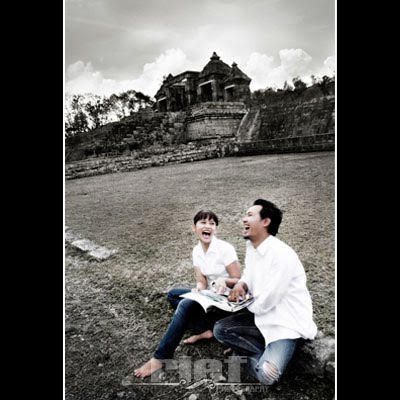

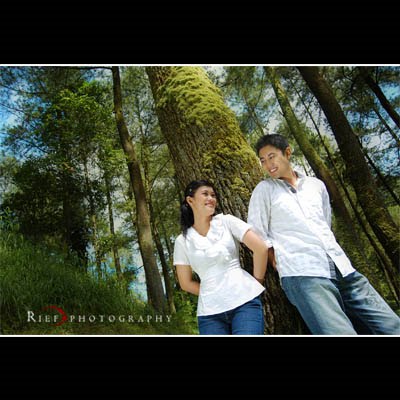

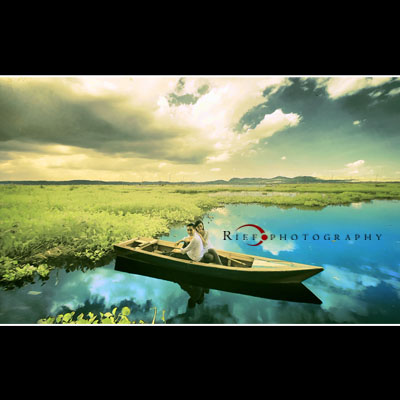
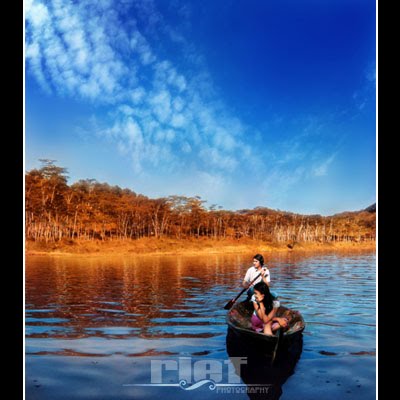

Tidak ada komentar:
Posting Komentar